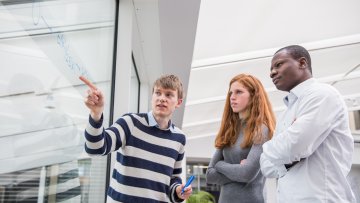Hyperbolic hydrodynamic limit of a anharmonic chain under boundary tension
Abstract
"We study the hydrodynamic limit for the isothermal dynamics of an anharmonic chain under hyperbolic space-time scaling under varying tension. The temperature is kept constant by a contact with a heat bath, realised via a stochastic momentum-preserving noise added to the dynamics. The noise is designed to be large at the microscopic level, but vanishing in the macroscopic scale. Boundary conditions are also considered: one end of the chain is kept fixed, while a time-varying tension is applied to the other end. We show that the volume stretch and momentum converge to a weak solution of the isothermal Euler equations in Lagrangian coordinates with boundary conditions."


